In today’s overstimulating world, our senses are constantly under attack — from loud noises to emotional stress — pushing our nervous systems into a chronic state of fight or flight. Your body may feel tense, your breath shallow, your heart racing — even when no danger is present.
But you are not powerless.
Restorative yoga offers a gentle, healing path to calm. By nurturing your body with slow, supported poses, you can soothe your overstimulated nerves and invite peace back into your system.
In today’s overstimulating world, our senses are constantly under attack — from loud noises to emotional stress — pushing our nervous systems into a chronic state of fight or flight. Your body may feel tense, your breath shallow, your heart racing — even when no danger is present.
But you are not powerless.
Restorative yoga offers a gentle, healing path to calm. By nurturing your body with slow, supported poses, you can soothe your overstimulated nerves and invite peace back into your system.
It’s not just about stretching — it’s about reconnecting with your inner calm, your sense of safety, and your true self.
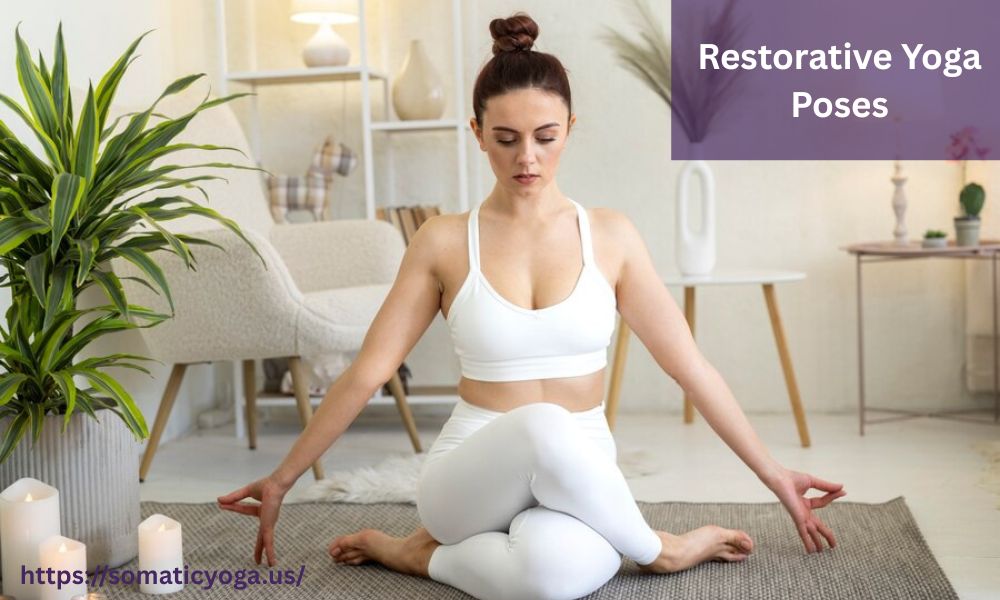
Restorative yoga Pose
What is Restorative Yoga?
Restorative yoga is more than rest — it’s a quiet return to your inner self. Using supportive props like blankets and bolsters, each yoga pose gently encourages your body to relax, your breath to slow, and your nervous system to release built-up tension naturally. There’s no pressure to perform — just stillness, support, and presence.
In this space of calm, your mind and body receive a simple yet powerful message: you’re safe now. That’s where the restorative yoga benefits begin — in the silence, in the surrender, and in simply being.
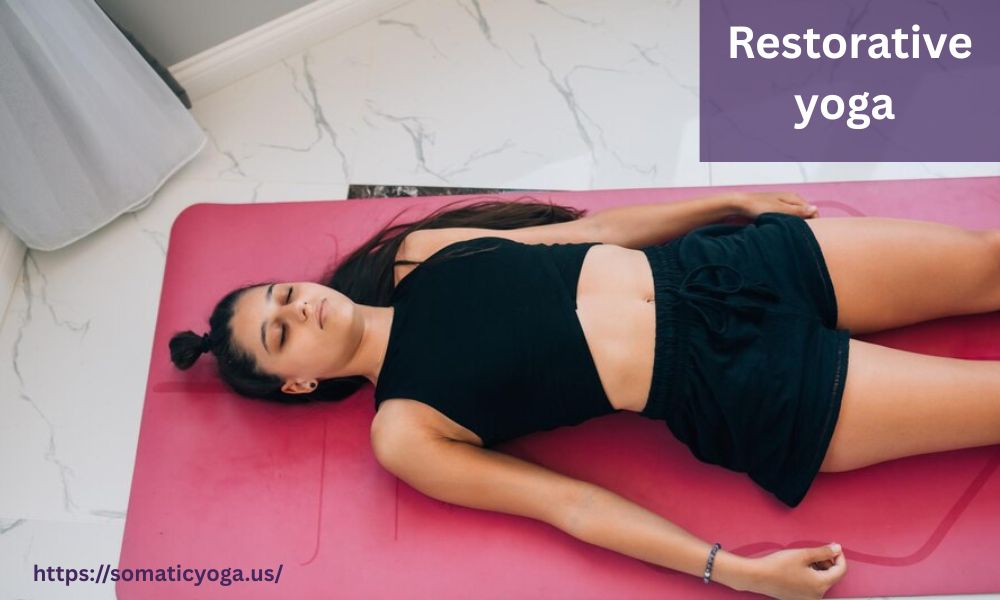
Restorative yoga is more than rest
Benefits of Restorative Yoga Poses.
In a fast-moving world where burnout is the norm, restorative yoga stands out as a gentle, science-backed tool for healing and balance. Here’s how this deeply calming practice transforms your body and mind:
1. Naturally Reduces Chronic Stress
Restorative yoga activates your body’s relaxation response, reducing cortisol levels and easing the nervous system. This transition from “fight or flight” to “rest and restore” helps your brain release calming hormones like serotonin and dopamine — leaving you emotionally grounded and mentally clear.
2. Releases Deep Muscular Tension
Long-held stress can live in the body as tight shoulders, clenched jaws, or a stiff back. Restorative poses combined with breathwork gently signal your muscles to let go, creating space for softness and mobility without force.
3. Eases Chronic and Emotional Pain
Whether you’re dealing with physical pain or trauma-linked discomfort, restorative yoga calms the brain’s pain center (the amygdala). This helps rewire pain signals, allowing your body to relax and recover on a deeper level.
4. Relieves Headaches and Migraines
Stress-induced headaches often stem from tight muscles, shallow breathing, and poor posture. Restorative postures like reclined heart openers and supported forward folds help release tension and increase blood flow, reducing headache frequency and severity.
5. Enhances Breathing and Lung Capacity
Restorative yoga gently opens the chest and relaxes the diaphragm, allowing for deeper, more nourishing breaths that calm the mind and support overall well-being. This improved breath awareness also stimulates the vagus nerve — enhancing calm, improving digestion, and lowering your heart rate naturally.
6. Improves Sleep Quality
Integrating just 15 minutes of restorative yoga into your nighttime routine can calm racing thoughts, regulate your nervous system, and prepare your body for restful sleep. You’ll fall asleep faster and stay asleep longer — without the need for sleep aids.
7. Builds Emotional Strength and Balance
Emotions often live in the body long after the triggering event has passed. Restorative yoga creates a quiet, supportive space where stillness helps release stored emotions, promoting emotional healing and inner balance. This consistent self-care builds emotional resilience and teaches you how to meet yourself with compassion.
8. Encourages Deep Mindfulness
Unlike active yoga styles, restorative yoga cultivates inward awareness. Each pose is an opportunity to observe your inner world — your thoughts, sensations, and feelings — without judgment. With consistent practice, restorative yoga cultivates a deeper connection between mind and body, enhancing self-awareness and bringing greater emotional clarity.
9. Supports Nervous System Regulation
Restorative yoga trains your nervous system to shift from high alert to a healing state. This is vital for those recovering from anxiety, trauma, burnout, or chronic fatigue. With repeated practice, your body learns how to return to calm — even outside of class.
10. Boosts Overall Mental Well-being
This practice isn’t just physical — it creates a sense of safety, self-trust, and inner peace. Over time, restorative yoga becomes a powerful tool for managing anxiety, depression, and overwhelm by reconnecting you with your breath, your body, and the present moment.
10 Best Restorative Yoga Poses for Nervous System Regulation.
When the pressures of life become too much to handle, your nervous system may become overstimulated, leading to heightened stress and tension. Restorative practices can help bring it back into balance, fostering a sense of calm and grounding.
Restorative yoga is a soothing and nurturing practice designed to relax the body, calm the mind, and promote deep relaxation and healing. These 10 yoga poses are specifically designed to promote relaxation, regulate the nervous system, and invite deep healing. Whether you’re recovering from stress, anxiety, or simply need rest, these poses will support your journey inward.
1. Supported Child’s Pose (Balasana)
How to Do It:
Start on all fours. Bring your big toes together, knees wide apart, and place a bolster or pillow between your thighs. Slowly lower your torso onto the prop. Rest your forehead to one side and switch halfway through. Relax your arms beside the bolster.
Benefits:
- Encourages gentle hip release while naturally extending the spine, creating space for improved posture and deeper relaxation
- Calms the brain and reduces stress
- Stimulates digestion and promotes inner stillness
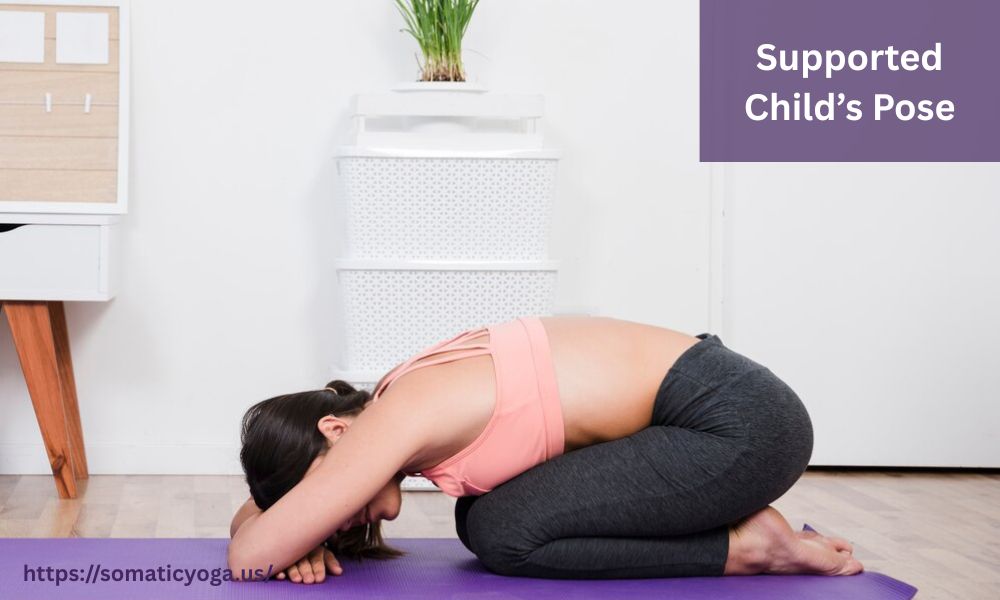
2. Grounding Spinal Twist
How to Do It:
Sit with your right hip next to a bolster. Gently bend your knees and rotate your torso toward the bolster, allowing your belly and chest to fully relax onto the support. Turn your head to one side, settle into stillness for 3–5 minutes, then switch sides to restore balance across the body. Hold for 3–5 minutes, allowing your body to fully release tension, then switch sides to maintain balance and enhance flexibility.
Benefits:
- Releases spinal tension
- Stimulates digestion
- Reduces back pain and anxiety
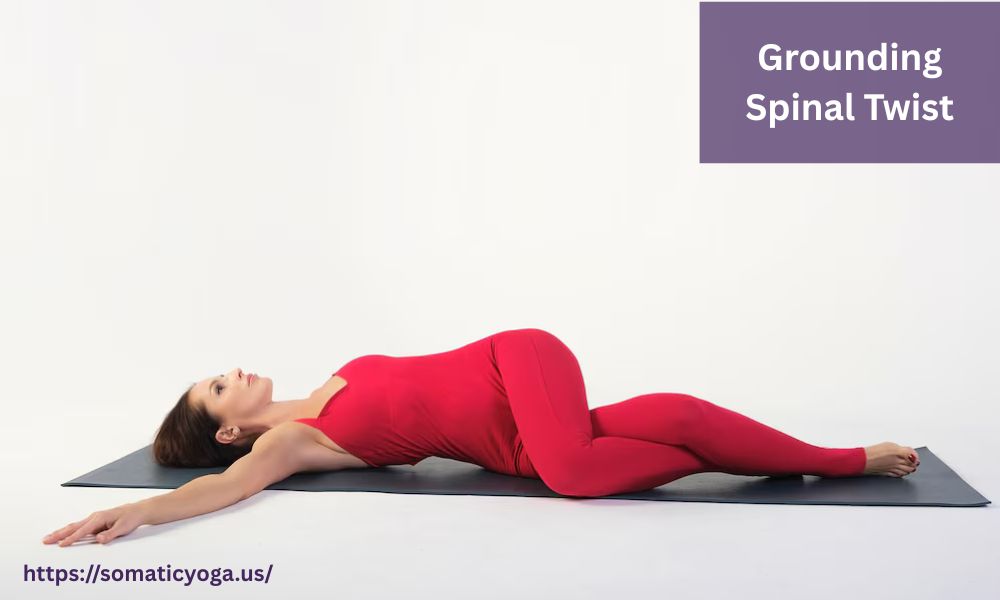
3. Head to Bolster Pose
How to Do It:
Sit in butterfly pose with a bolster between your feet. Lean forward to rest your forehead on the bolster. Use yoga blocks to support your thighs if needed.
Benefits:
- Calms the mind
- Relieves headaches and neck tension
- Gently stretches hips and inner thighs
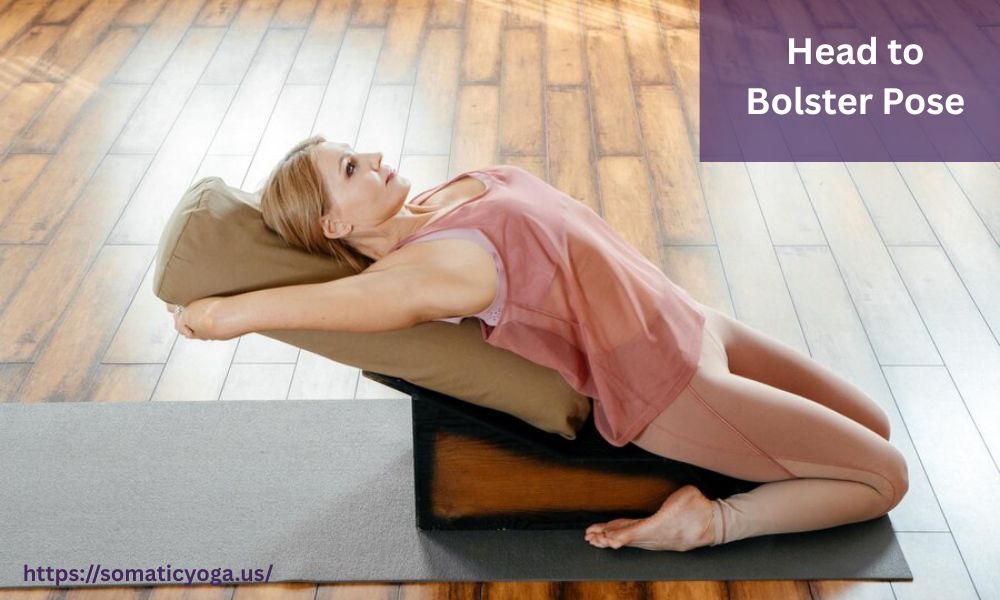
4. Surfboard Pose
How to Do It:
Lie face down with a bolster under your belly and a towel under your forehead. Use folded blankets for arm and ankle support. Rest your full weight into the props.
Benefits:
- Promotes sensory awareness
- Reduces full-body tension
- Encourages deep belly breathing
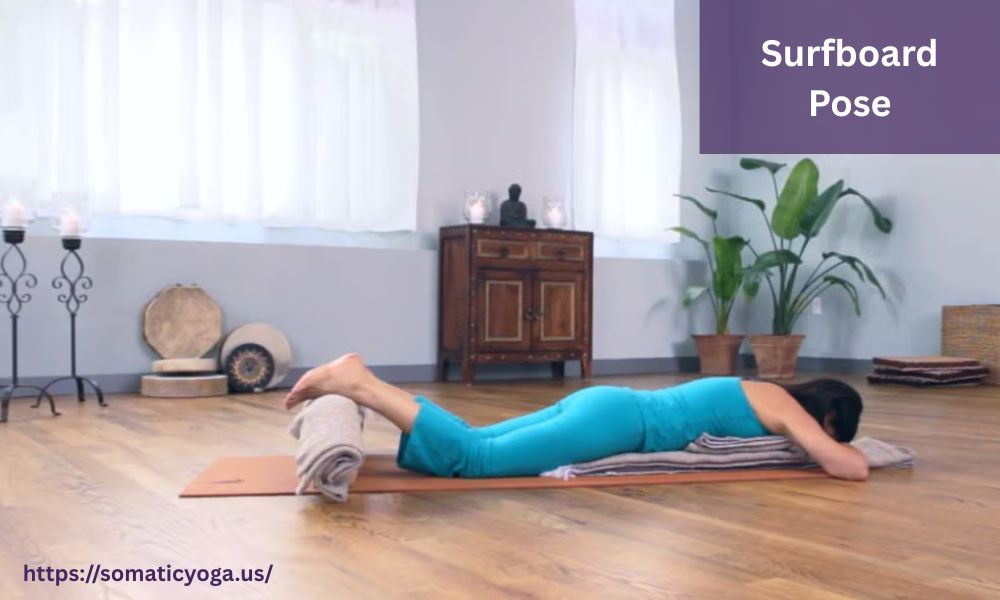
5. Restorative Tree Pose
How to Do It:
Lie comfortably on your back with a blanket supporting your head for gentle alignment. Position a second folded blanket beside your hip for added stability. Bring one knee outward, resting the sole of your foot against the opposite inner thigh.
Stay in this position for up to 5 minutes, allowing the hips to gently release tension and the nervous system to settle. When ready, switch sides to promote symmetry and restore energetic balance.
Benefits:
- Opens the hips and inner thighs
- Supports the lower back
- Deeply grounding and calming
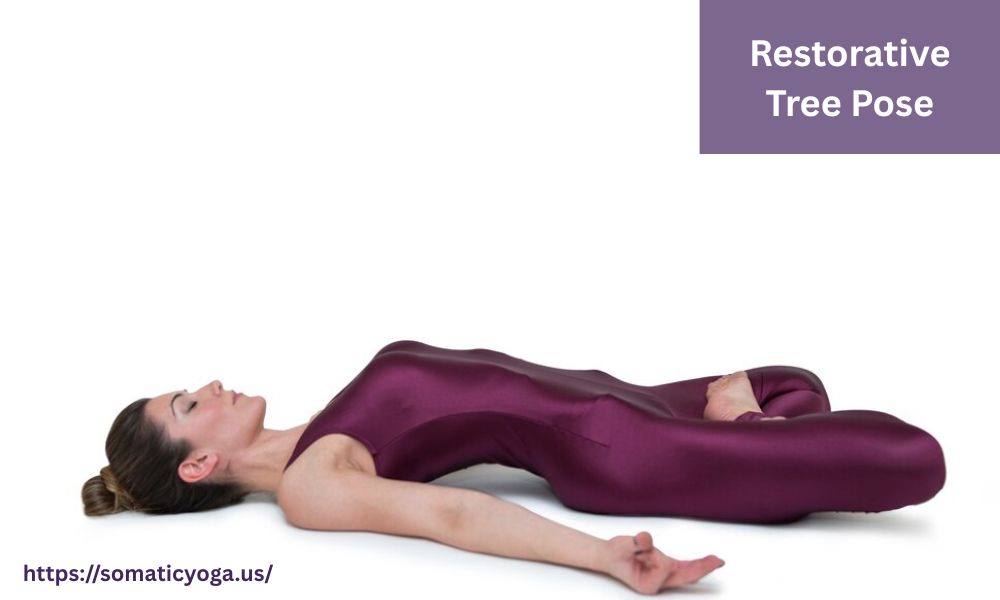
6. Supported Bridge Pose
How to Do It:
Begin by lying on your back with your knees gently bent and your feet grounded hip-width apart, creating a stable base for spinal alignment and core relaxation.. Use a yoga block or bolster under your sacrum. Optional: use a strap around your thighs for full support. Arms can relax in cactus shape.
Benefits:
- Stretches the chest and hips
- Improves breathing and spinal health
- Eases lower back pain
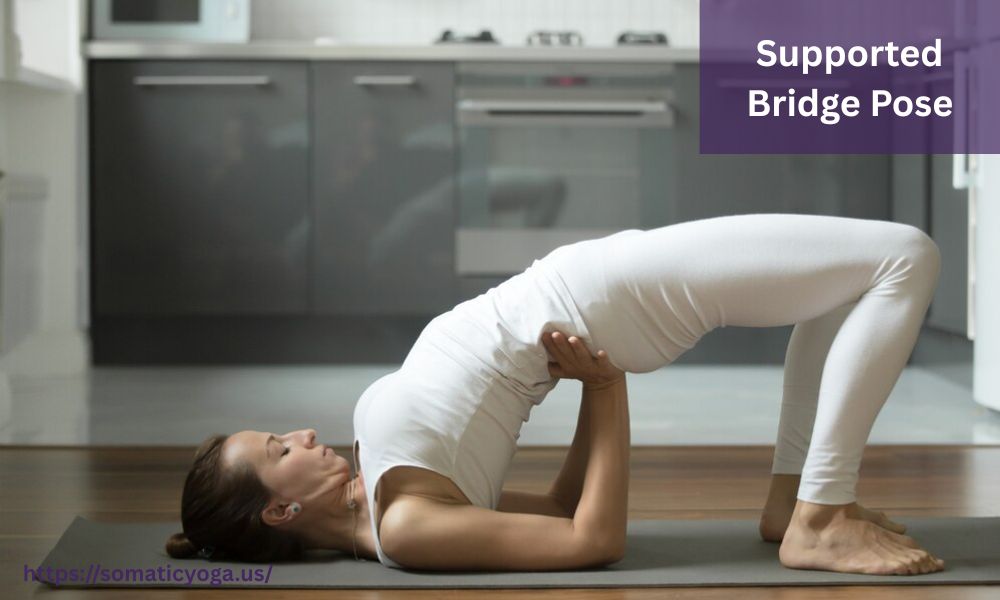
7. Supported Fish Pose
How to Do It:
Gently recline onto a bolster positioned lengthwise along your spine to support natural heart opening. Place a soft blanket under your head to ease neck tension, and let your legs and arms extend fully with palms facing up for deep release. For added lower back support, place a rolled blanket under your knees—optional, but highly comforting.
Benefits:
- Opens the chest and shoulders
- Improves posture and breath quality
- Promotes feelings of love and emotional release

8. Heart Pose with Butterfly Legs
How to Do It:
Begin seated with your back supported by a bolster for upright comfort. Bring the soles of your feet together, allowing your knees to gently fall open into a butterfly position.
Place a rolled blanket under each thigh to reduce strain and encourage hip opening. Slowly recline onto the bolster and let your arms rest open at your sides, palms facing up, inviting a sense of openness and release.
Benefits:
- Deep hip and heart opening
- Improves lung capacity and breath control
- Enhances emotional clarity and calm
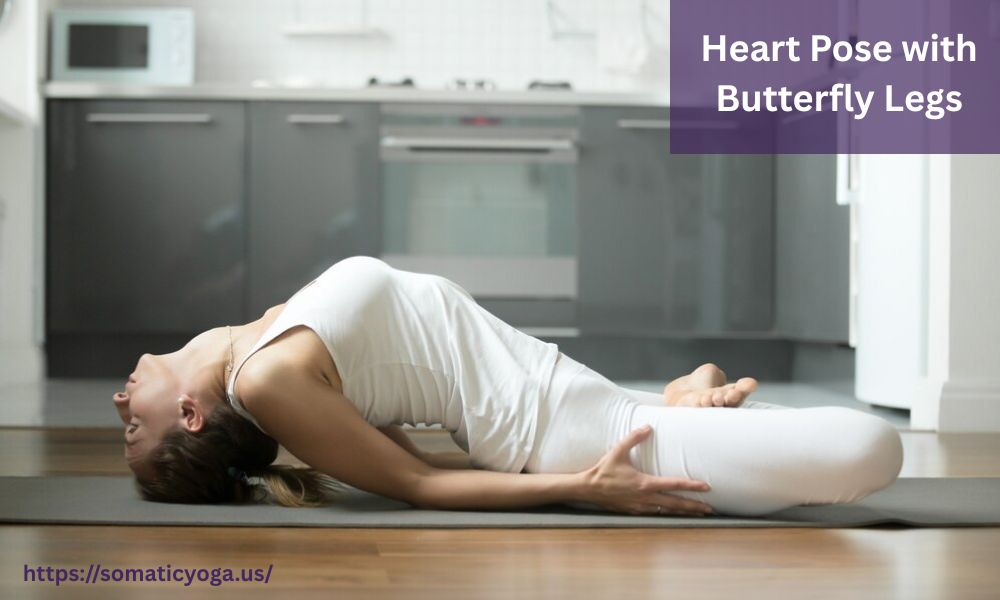
9. Gentle Spinal Twist
How to Do It:
Lie flat on your back with your arms extended in a T-shape to promote shoulder openness and enhance chest expansion. Gently draw your knees toward your chest, then slowly lower them to one side for a gentle spinal twist. If needed, use a pillow for extra comfort and support. Repeat on the other side to release built-up tension, enhance spinal mobility, and improve flexibility.
Benefits:
- Releases spinal and lower back tension
- Promotes digestion and detoxification
- Calms the parasympathetic nervous system
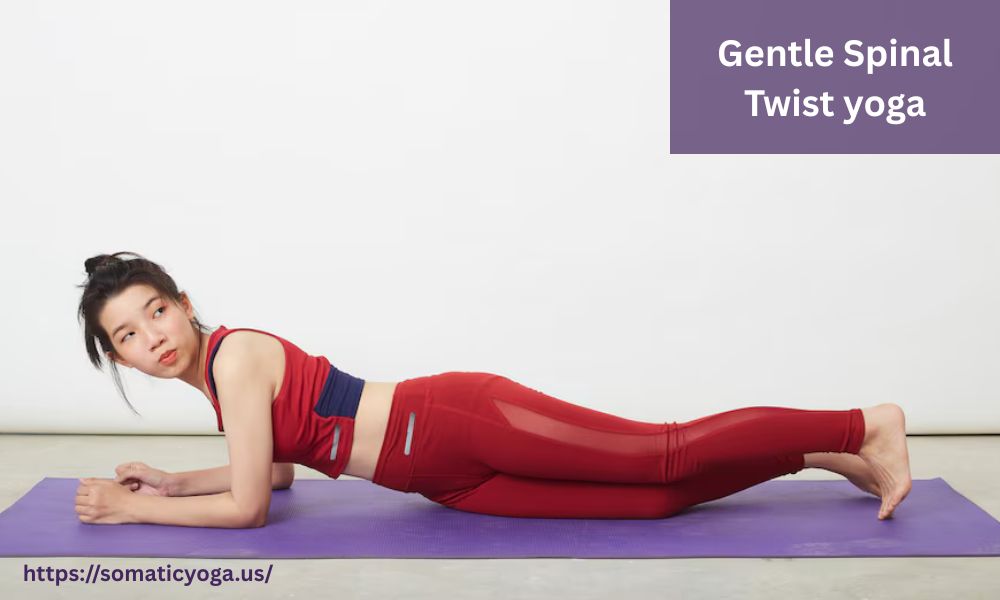
10. Legs-Up-The-Wall Pose (Viparita Karani)
How to Do It:
Sit beside a wall and gently swing your legs up as you lie back into a supported rest. Place a folded blanket under your hips to provide additional support, enhance comfort, and promote proper alignment during the pose. Allow your arms to rest by your sides, promoting relaxation and easing tension in the lower body.
Benefits:
- Reduces fatigue and leg swelling
- Lowers blood pressure
- Activates the body’s rest-and-digest response
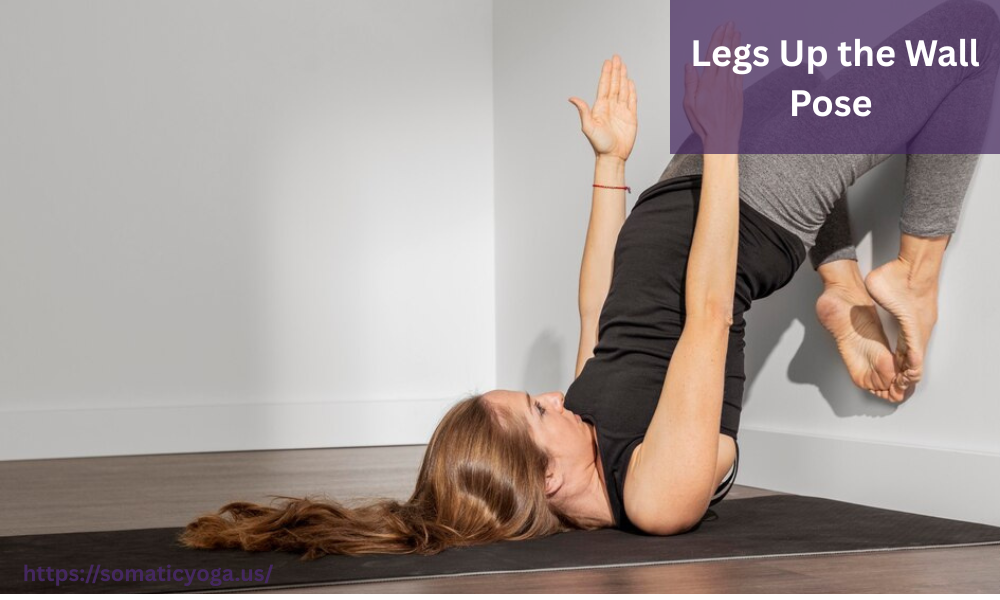
Conclusion: A Path to Balance and Wellness
Becoming aware of when your nervous system is out of balance is the essential first step in restoring harmony and beginning the healing process. By using techniques like restorative yoga, you can actively regulate your body’s response to stress, promoting a state of calm, emotional well-being, and mental clarity. The power of nervous system regulation isn’t just about surviving; it’s about thriving in a world that often demands more than we can give.
So, take the time to care for your body and mind through restorative practices. Your nervous system will benefit greatly from this, helping you feel more centered and at ease.
- A Complete Guide to Somatic Yoga for Mind and Body Healing
- Somatic Exercises for Weight Loss: A Mind-Body Approach
- 10 Easy Partner Yoga Poses for 2 Beginners (Step-by-Step with Benefits)
- What is Somatic Yoga?
- Top 7 Somatic Techniques for Anxiety Relief & Emotional Balance
- 9 Somatic Hip Exercises For Beginners
- Top 10 Restorative Yoga Poses for Nervous System Regulation
- Somatic Grounding Exercises for Self-Regulation
